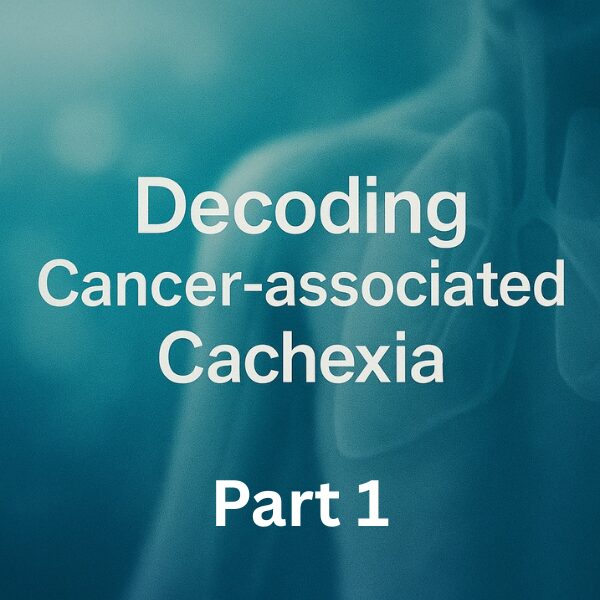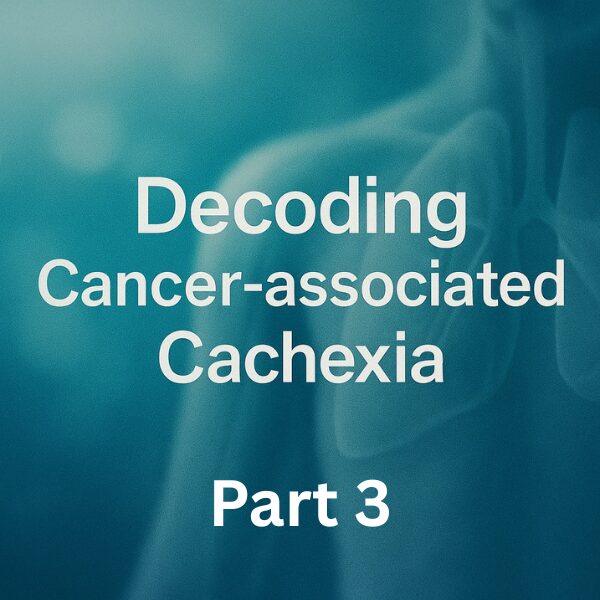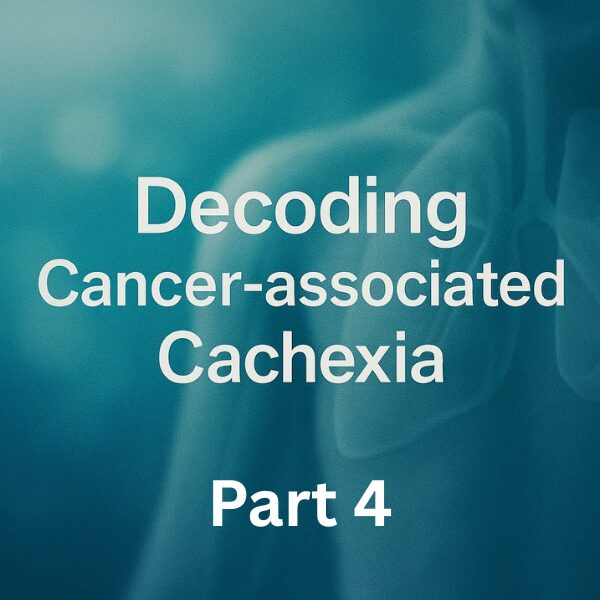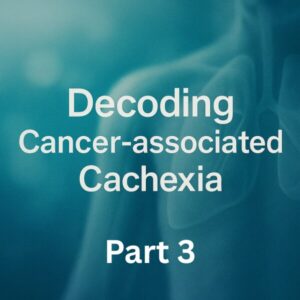What Works Today — Nutrition, Exercise, Anti-inflammation, and Current Drugs
Part 5 is a how-to guide. We align home and clinic workflows and run nutrition, resistance exercise, inflammation/symptom control as a package. Medications are adjuncts—use purposefully and safely with your clinical team.
3 takeaways
- Start multi-modal together: nutrition + exercise + symptom/inflammation care, then review at two weeks.
- Match the first move to the phenotype: fat-first → appetite/nausea + energy; muscle-first → resistance + protein.
- Use drugs short-term with goals: low-dose olanzapine, megestrol, short-course steroids, anamorelin (JP) when appropriate.
1) Clinic workflow (15–20 min first visit; 10 min follow-up)
- Home prep: two-week log (weight, intake, activity, function, symptoms) + one meal photo/day.
- Quick assessment: update the Part-3 mini-dashboard (composition/function/PROs).
- Phenotype: fat-first / muscle-first / mixed.
- Same-day start: diet plan + home resistance + symptom/inflammation fixes + (if indicated) a short drug trial.
- Two-week review: keep what helps, stop what doesn’t, iterate.
2) Nutrition: make protein and energy feasible
- Targets: protein 1.2–1.5 g/kg/day, energy 25–30 kcal/kg/day (individualize for age/activity/comorbidities).
- Pattern: 3 meals + 2 snacks; include a protein source each time.
- When intake is hard: cooler foods, a touch of acid/aroma, small frequent portions, short-term oral supplements.
- Fat-first tips: energy-dense foods (oils, nuts, avocado) + aggressive antiemetics.
- Muscle-first tips: leucine/EAA focus and post-exercise protein timing.
3) Home resistance: painless, breath-light, reproducible
Core set (≈3 days/week)
- Chair stands 10×2
- Heel raises 20×2
- Band curls/extensions 10×2
- Stair steps 1–2 flights
Intensity: RPE 3–4/10 (“somewhat easy–somewhat hard”). Skip on fever, severe nausea, or pain flares.
Safety flags (stop & call)
- Chest pain, severe dyspnea, presyncope/falls
- Fever, irregular pulse, perceived desaturation
- New/worse bone pain or disabling myalgia
4) Tame symptoms/inflammation: make eating possible
- Nausea/vomiting: bedtime low-dose olanzapine; tailor 5-HT3 blockers to regimen.
- Pain/sleep: relieving pain and improving sleep unlock activity.
- Constipation/diarrhea, mucositis: lower these barriers to intake quickly (laxatives, probiotics per team advice, mouthwashes).
- Anti-inflammation: consider NSAIDs short-term at minimal effective dose when appropriate; monitor GI/renal risks.
5) Positioning current drugs (always clinician-led)
Anamorelin (JP)
- Goal: improve appetite, weight, lean mass in eligible cancers.
- Best fit: fat-first → mixed with anorexia prominent.
- Watch: glucose, edema, CV history; define duration and stopping rules.
Low-dose olanzapine
- For anorexia/nausea symptom relief (often bedtime).
- Watch: somnolence, EPS/QTc per team guidance.
Megestrol acetate
- Expected: appetite↑, weight↑ (often fluid/fat).
- Caution: edema, VTE risk; be selective in frail/at-risk patients.
Short-course corticosteroids
- Expected: short-lived boosts in appetite/energy.
- Caution: long-term harms (infection, hyperglycemia, myopathy); set a clear taper/stop plan.
Rule of thumb: define goals, test briefly, keep if helpful, stop if not. Avoid open-ended monotherapy; reassess every two weeks.
6) First moves by phenotype (quick map)
Fat-first
- Antiemetics + appetite support first
- Energy-dense diet
- Anamorelin if eligible
Muscle-first
- Resistance + protein-forward plan
- Fix pain/sleep
- Address inflammation/metabolic tilt
Mixed
- Start multiple levers together
- Escalate symptom care
- Short drug trial when justified
7) What to review at two weeks
- Appetite/nausea scores (0–10)
- Function (chair stands count/effort; stairs breathlessness)
- Weight/edema, bowel status
- Behavior (outings, steps, naps)
- Safety (falls, hyperglycemia, edema, arrhythmia)
8) Pitfalls to avoid
- Chasing weight alone → always pair with function/PROs.
- Leaving “can’t eat” unaddressed → fix nausea/mucositis/constipation first.
- Zero or excessive exercise → target RPE 3–4 for sustainability.
- Medication drift → two-week goal-and-stop reviews.
My Perspective
Starting “eat–move–unblock” together outperforms single levers. Make the first move phenotype-specific, then in two weeks double down on what works and drop what doesn’t. The core win is reclaiming time-of-day windows when the patient can be active—meds smooth the road, but behavior + environment carry the distance.
Next in the Series
Part 6: “What’s Next — GDF15 Blockade and the Era of Precise Phenotypes.” We’ll explore biomarker-driven enrollment, composite endpoints, and home sensing for next-generation trials.
Edited by Morningglorysciences
Related Article













Comments